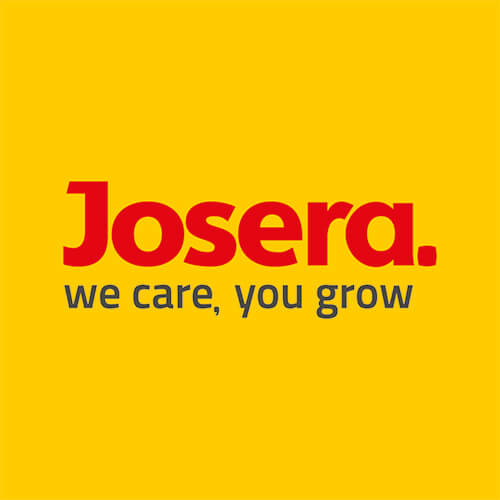Overripe maize stocks
The lack of rainfall led to a sharp decline in growth. Some plants have already overripened. In some cases entire sites have dried out.
Problem
No further cob growth is expected for crops that have dried out to such an extent. Instead, the plant continues to ripen or dry out, causing difficulties in subsequent compaction in the silo. Silos are very vulnerable to reheating and thus high feed losses. This makes an early harvest necessary. Although the energy content and feed value of the resulting maize silage is generally much lower than that of “normal” maize silage, the rest of the plant can at least increase the feed supply. As a result, the already scarce supply of staple feed is improved.

Recommended use of silage inoculants
To protect silages, we recommend the use of Josilac ferm or Josilac extra. They increase the stability of your silage through efficient and sustainable formation of acetic acid. By using these silage inoculants, further silage losses related to dry matter and reheating in the silo can be reduced. The silage stays fresh and stable for longer and the development of yeasts and moulds is inhibited. The feed deposited on the feed alley is therefore fresh, cool and hygienic.
Crops with well-developed cobs and where the rest of the plant is green should continue to ripen and reach a higher starch content. As they continue to ripen, the ratio of the cob compared to the total plant shifts in favour of the cob, and at the same time the dry matter increases.
This can lead to problems in the silo, especially in this year’s harvest, as dry silage can only be moderately compacted. A high feed rate in connection with the use of a stabilising silage inoculant is strongly advised.
Maize crops with green plants but without cob development
In addition to the overripe maize crops, you can also see crops still with green plants, but without cob development and stalks already showing red discolouration.
These should be harvested quickly. The plant is characterised by a high sugar content, which is stored in the plant to be displaced after the cob bears fruit.
Problem
On the one hand, there is a problem of silage effluent production due to the comparatively low dry matter content; on the other hand, the high content of easily soluble carbohydrates produces a very sensitive feed stock

Recommended use of silage inoculants
For crops like these, we recommend the use of Josilac combi. By means of homofermentative lactic acid bacteria Josilac combi rapidly lowers the pH and improves stability through targeted formation of acetic acid. The resulting improved fermentation process and protection against reheating ensure the best possible feed mass of such critical crops in terms of both quantity and quality.
You might be interested in the following contents:
Turbo, Safety and Symbiosis – Effect
Since the market launch and the now 20 year existence of the silage inoculant brand “Josilac”, there has been and is still a constant development and progression process.
Maize silage – What should be kept in mind
Every year it is important to bring the maize into the silo. The silage needs to remain cool and fresh because the cows do not need a warm meal. You can find out what to consider when harvesting maize here.







